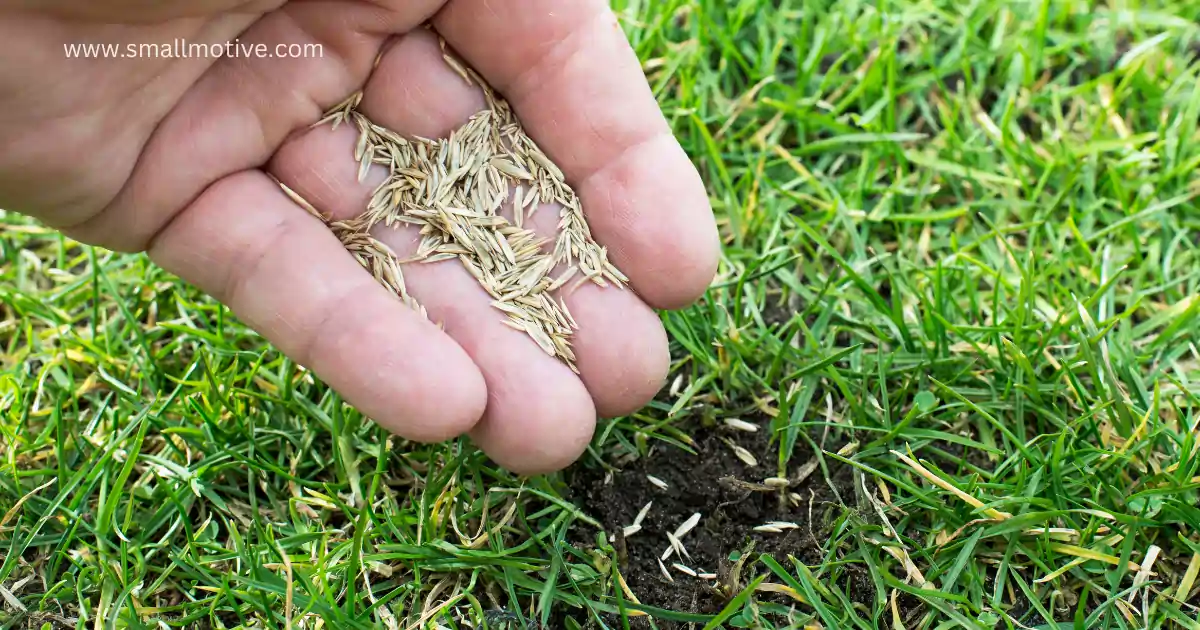Introduction:
Are you looking to achieve a lush and healthy lawn? The key to success lies in knowing the best time to plant grass seed. By understanding the optimal season for seeding and considering factors such as grass seed germination and growth results in your region, you can cultivate a beautiful lawn that will be the envy of your neighborhood.
Key Takeaways:
- Knowing when to plant grass seed is crucial for a thriving lawn.
- Consider factors such as climate conditions, soil temperature, and grass seed varieties.
- Prepare your lawn and sow the seeds in the right season for optimal germination.
- Understanding the best time to plant grass seed by region can enhance growth results.
- Follow tips for successful grass seed germination, watering, and maintenance to maximize your lawn’s potential.
Factors to Consider for Planting Grass Seed
Before planting grass seed, several factors need to be taken into consideration. The success of your lawn’s growth depends on understanding and addressing these factors. Let’s explore the importance of climate conditions, soil temperature, grass seed varieties, and seeding preparation to ensure a thriving and lush lawn.
Climate Conditions
The climate conditions in your region play a vital role in determining the optimal time for planting grass seed. Different grass species have specific temperature and moisture requirements for germination and growth. Understanding the climate conditions will help you choose the right grass seed variety and plan your seeding accordingly.
Soil Temperature
Soil temperature is another crucial factor to consider when planting grass seed. The ideal soil temperature for seed germination varies depending on the grass species. Some grass varieties thrive in cooler temperatures, while others prefer warmer soil. You can monitor soil temperature using a soil thermometer to determine the best time to sow the seeds for optimal growth.
Grass Seed Varieties
Choosing the right grass seed variety is essential for a successful lawn. Different grass species and cultivars have unique characteristics, such as drought resistance, shade tolerance, and foot traffic durability. Research the grass seed varieties that are suitable for your region’s climate conditions and match them with your specific lawn needs and preferences.
Seeding Preparation
Proper preparation is key to achieving successful grass seed germination and growth. This involves several steps, such as soil testing and preparation, removing weeds and debris, and ensuring proper seed-to-soil contact. By preparing the seeding area adequately, you create an optimal environment for the seeds to establish strong roots and flourish.
By considering climate conditions, soil temperature, grass seed varieties, and seeding preparation, you can lay the foundation for a thriving lawn. The careful consideration of these factors will set you up for success and help you achieve a lush and healthy lawn that enhances the beauty of your outdoor space.

| Factor | Importance |
| Climate Conditions | Determines optimal planting time and grass species suitability |
| Soil Temperature | Affects seed germination and determines the viability of grass species |
| Grass Seed Varieties | Choosing suitable grass varieties for regional climate and lawn needs ensures resilience and desired characteristics |
| Seeding Preparation | Properly preparing the seeding area creates an ideal environment for seed establishment and growth |
Best Time to Plant Grass Seed by Region
The ideal time for planting grass seed varies based on the region you live in. Factors such as climate and temperature play a significant role in determining the best time to sow grass seeds for optimum growth and establishment. Let’s explore the recommended seeding times for different regions and grass types to help you achieve a lush and healthy lawn.
Cool-Season Grasses:
In the Northern region, where cool-season grasses thrive, the ideal time to plant grass seed is in early fall or spring. This allows the seeds to germinate and establish before the extreme temperatures of winter or summer. Cool-season grasses include varieties such as Kentucky bluegrass, perennial ryegrass, and tall fescue, which are well-suited to withstand the cold winters and moderate summers of this region.
Warm-Season Grasses:
In the Southern region, warm-season grasses are the preferred choice due to their tolerance to the hot and humid climate. These grasses, including Bermuda grass, St. Augustine grass, and Zoysia grass, should be planted in late spring or early summer when the soil temperature reaches around 65 to 70°F (18 to 21°C). This ensures that the seeds have optimal conditions for germination and establish strong roots before the intense heat of summer.
Transition Zone:
The transition zone, which spans across the middle of the United States, presents a challenge for choosing the best time to plant grass seed. This area experiences both hot summers and cold winters, making it a blend of both cool-season and warm-season climates. For this region, a combination of cool-season and warm-season grasses can be used, depending on the specific location within the transition zone. The recommended times for seeding in the transition zone are early fall and early spring, similar to the Northern region, or in mid-spring for warm-season grasses.

By understanding the specific climatic conditions of your region and selecting the appropriate grass type, you can ensure that you are planting grass seeds at the best time for optimal growth and establishment. Be sure to consider factors such as the average temperatures and frost dates in your area to make informed decisions and create a beautiful and resilient lawn.
Tips for Successful Grass Seed Germination and Growth
Ensuring successful grass seed germination and healthy lawn growth requires following specific tips and techniques. By taking into consideration the important aspects of soil preparation, seed selection, watering, maintenance, and overseeding, you can maximize the potential of your lawn and achieve the lush, green landscape you desire.
1. Soil Preparation
Proper soil preparation is crucial for providing a favorable environment for your grass seed to germinate and grow. Start by removing any debris, rocks, or weeds from the area. Loosen the soil with a rake or tiller to improve drainage. Consider performing a soil test to determine the pH level and nutrient deficiencies, if any, to amend the soil accordingly. This will create the ideal foundation for robust root development and healthy grass growth.
2. Seed Selection
Choosing the right seed variety for your specific lawn conditions is essential for successful germination and growth. Factors such as climate, sunlight exposure, and intended use (such as high-traffic areas or shady spots) should be taken into account. Select grass seed varieties that are well-suited to your region’s climate conditions and have a proven track record for strong performance.
3. Watering Practices
Proper watering is crucial for the establishment and growth of your grass seed. After seeding, ensure that the top inch of soil remains consistently moist until germination occurs. Consider using a sprinkler or irrigation system to provide even coverage. Once the grass begins to grow, transition to deeper, less frequent watering to encourage deep-root development. Avoid overwatering, as it can lead to shallow root growth, disease, and weed problems.
4. Regular Maintenance
Maintaining your lawn regularly is key to its overall health and appearance. This includes practices such as mowing, fertilizing, and controlling weeds. Start mowing when the grass reaches a height of about 3 inches, and ensure your mower blades are sharp to avoid tearing the grass. Fertilize your lawn according to the specific needs of your grass variety, following the manufacturer’s instructions. Lastly, stay on top of weed control by utilizing manual removal, herbicides, or natural weed control methods.
5. Overseeding
Overseeding is a beneficial practice that helps fill in thin or bare areas of your lawn, promoting denser grass growth. It also helps to introduce new grass varieties into an existing lawn, improving its overall health and appearance. Prioritize overseeding in early spring or early fall, as these seasons provide optimal conditions for seed germination. Follow the same preparation and watering practices as you would for initial seeding to ensure successful overseeding.
By following these tips for successful grass seed germination and growth, you can create a beautiful, resilient lawn that enhances the aesthetic appeal of your outdoor space. Remember to tailor your approach based on your region’s specific climate conditions and consult with local lawn care experts or resources for additional guidance.

| Tips | Description |
| Soil Preparation | Remove debris and weeds, loosen soil, perform soil test, amend soil pH and nutrients |
| Seed Selection | Choose grass seed varieties suitable for climate, sunlight exposure, and intended use |
| Watering Practices | Maintain consistent moisture during germination, transition to deep, infrequent watering |
| Regular Maintenance | Mow at the right height, fertilize according to grass variety, control weeds |
| Overseeding | Fill in thin or bare areas, introduce new grass varieties, and follow preparation and watering practices |
Conclusion
Planting grass seed at the right time is crucial for achieving a vibrant and thriving lawn. By considering the climate conditions in your region, the optimal soil temperature, and the specific grass seed varieties suitable for your area, you can ensure successful germination and growth.
Follow our tips for proper soil preparation, seed selection, watering techniques, and ongoing maintenance to maximize your lawn’s potential. Don’t forget the benefits of overseeding to fill in any thin or bare areas. With careful planning and consistent care, you can enjoy a beautiful and lush lawn throughout the year.
So, mark your calendar and get ready to sow those grass seeds at the ideal time. Remember, a well-timed seeding leads to a healthy and picture-perfect lawn that will be the envy of your neighbors.
FAQ:
When is the best time to plant grass seed?
The optimal time to plant grass seed is typically in the late summer or early fall. This allows the seeds to germinate before winter and establish strong root systems. However, it’s important to consider your region’s climate and the type of grass seed you are using for more accurate timing.
What are the factors to consider when planting grass seed?
When planting grass seed, it is essential to take into account the climate conditions and soil temperature. These factors significantly influence the success of seed germination. Additionally, the selection of grass seed varieties suitable for your region and proper preparation of the seeding area are crucial.
When is the best time to plant grass seed based on region?
The best time to plant grass seed varies depending on the region you reside in. For cool-season grasses, such as Kentucky bluegrass and tall fescue, early fall is the ideal time to sow the seeds. Warm-season grasses, like Bermuda grass and zoysia grass, should be planted in late spring or early summer. If you are in the transition zone, which lies between the cool and warm regions, late summer to early fall is generally recommended.
What tips can help ensure successful grass seed germination and growth?
To achieve successful grass seed germination and promote healthy growth, it is crucial to properly prepare the soil by removing debris and loosening it. Selecting the right seed variety suited for your specific lawn needs is also important. Adequate watering, regular maintenance, and periodic overseeding can enhance the overall health and appearance of your lawn.
Why is it important to plant grass seed at the right time?
Planting grass seed at the right time is crucial because it increases the chances of successful germination and establishment of healthy grass plants. By considering your region’s climate and following the recommended timing, you can provide the optimal conditions for seed growth, leading to a lush and vibrant lawn.
